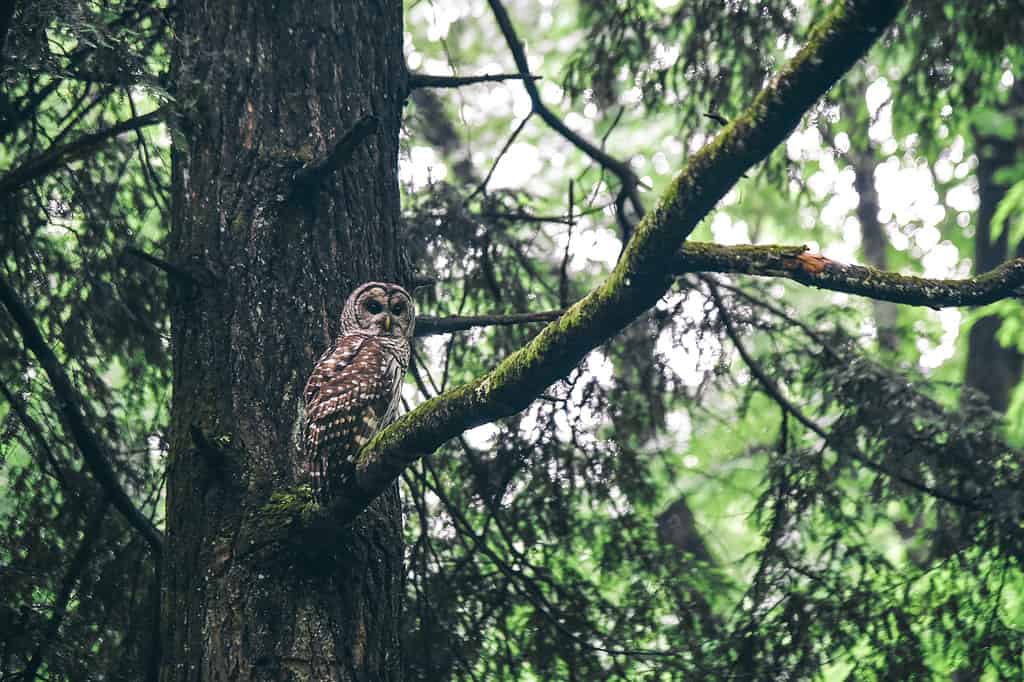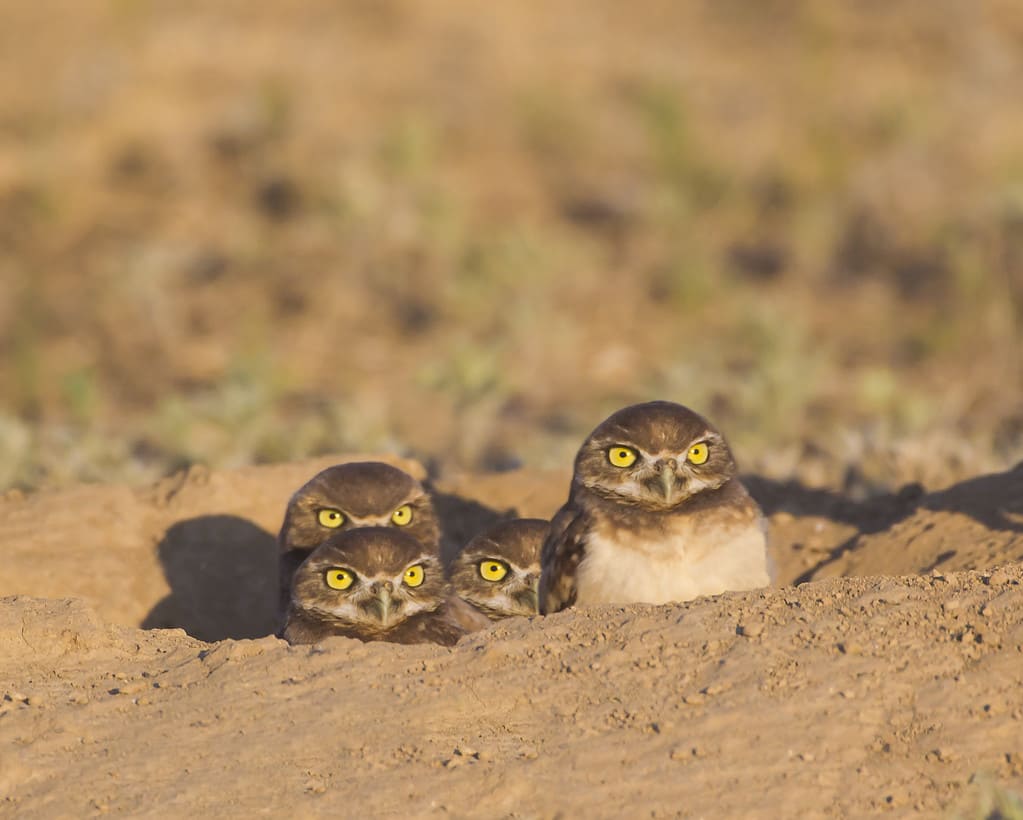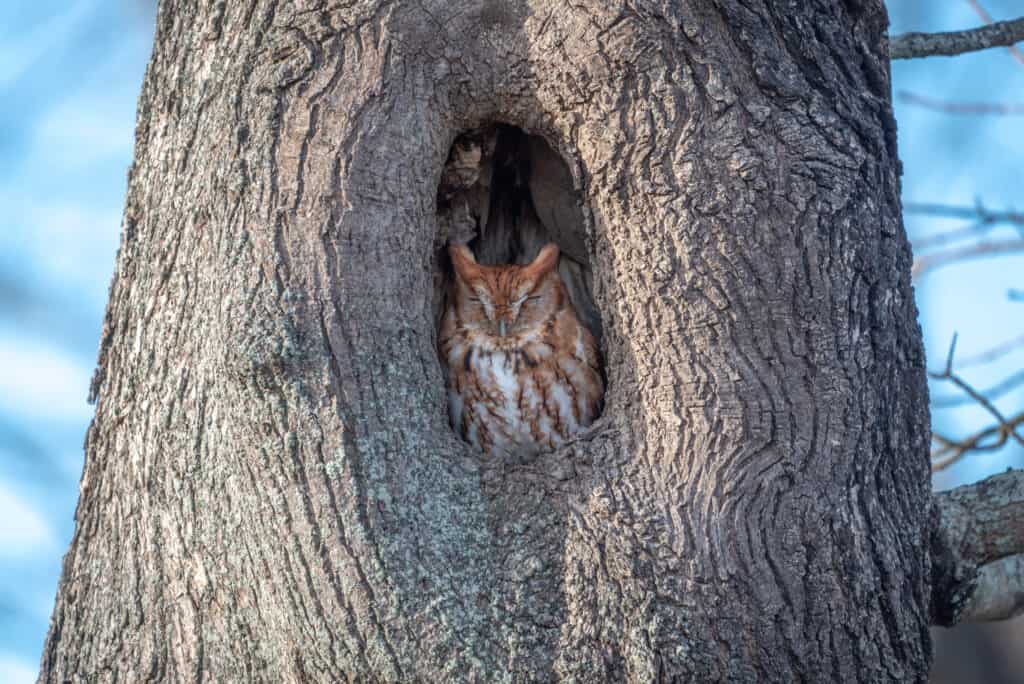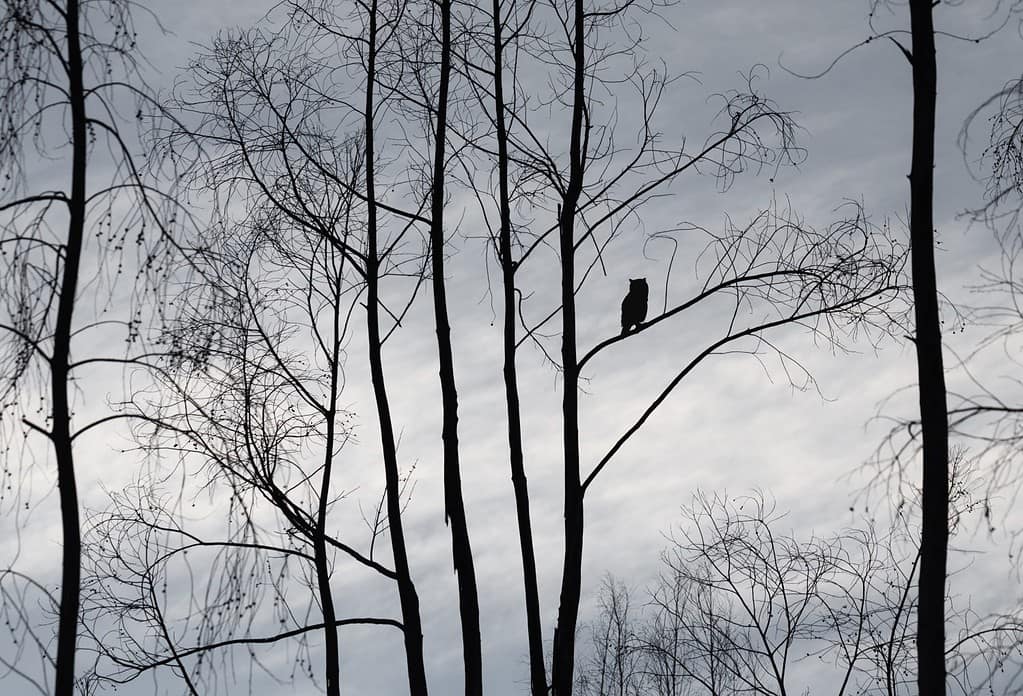Wherever you go, you probably aren’t far from an owl. Owls live on every continent except for Antarctica. However, since these birds are nocturnal, many people don’t know how close they are. But where do owls go when they aren’t soaring silently through the night skies? Let’s take a look at where owls live.
Where Owls Live

The scientific name for the
barred owl
is
Strix varia.
© Alisha Bube/ via Getty Images
With over 250 species of owls from the order Strigiformes in the world, it’s hard to define exactly where owls live. (The answer is: Pretty much everywhere!) Owls live in many habitats, from woodlands and deserts to prairies and tundra. Even within one species, they may have varied ranges.
For example, North America’s great horned owls can be found in practically any semi-open area, including forests, cities, wetlands, fields, neighborhoods, and even deserts. The burrowing owl, native to North America and dry areas in South and Central America, lives in underground burrows in deserts and arid plains. In the Indian subcontinent, Indian eagle-owls are found in scrub forests and rocky areas, avoiding very arid or humid locations. The rarest owl in the world, the Pernambuco pygmy owl, is found exclusively in a small area of Northeastern Brazil in humid lowland forests.
North America is home to at least 19 owl species, while Europe has 13 different species. Central America has 24 owl species, five of which are endemic. You can find 49 different owls in Africa and 11 in Australia. With so many diverse species and habitats, you can find owls just about anywhere.
Where Owls Nest

Great horned owls usually lay one to four eggs in a clutch.
©iStock.com/Bobliving
Different owl species have different nesting habits. Some owls build nests in trees, some nest inside trees, and some nest in holes in the ground. You may even find them nesting in barns or sheds.
Owls generally don’t build their own nests and often take over nests built by other species. Great horned owls use nests made by red-tailed hawks, herons, or even squirrels. They also nest on cliff ledges or derelict buildings. Other species that prefer large, open nests include long-eared owls, great gray owls, and Eurasian eagle-owls.
In contrast, some species of owls are cavity nesters, meaning that they nest inside a cavity or protected, sheltered area. Screech owls, barred owls, Tengelmalm’s owls, elf owls, and Ural owls are examples of cavity nesters that nest inside trees or cacti.
Ground-Nesting Owls

Burrowing owls live in areas that have high concentrations of burrowing mammals.
©RichardSeeley/iStock via Getty Images
Burrowing owls have a particularly unique nesting style. These small owls nest in underground burrows made by mammals such as prairie dogs or ground squirrels. Breeding pairs have a designated nesting site that they return to year after year during nesting season. Outside of the nesting season, they generally stay above ground.
While birds are known for flying and perching in treetops, not all build high nests. Some owls, such as short-eared owls, build nests on the ground amidst low vegetation or grass. The snowy owl, which lives in the tundra, builds its nest on the ground next to boulders or mounds. The female scrapes out a small indent in the ground and shapes it with her body. Unlike other birds, they generally do not line the nest with other materials.
Where Owl Sleep

Eastern screech owls sleep and nest in tree cavities.
©Kathryn Bedard/Shutterstock.com
Although owls build nests, they do not actually live in them. Nests are just for incubating eggs and raising chicks.
Instead, adult owls roost on tree branches or in a hollow tree during the day. Great horned owls like to roost near tree trunks on trees that provide a lot of cover, such as dense evergreens. This helps hide them from predators. Barn owls earn their name from their common roosting habits in manmade structures.
Other species such as the eastern screech owl roost within tree crevices or hollows, or man-made nest boxes. Burrowing owls are unique and are active during both the day and night. When they sleep though, they often roost in areas of vegetation on the ground.
Where to Find Owls

An owl’s silhouette is the easiest way to spot them.
©Bruno Ismael Silva Alves/Shutterstock.com
If you’re interested in owl-watching, the best time to see one is in winter. This is because deciduous trees are usually without leaves, making it easier to see owls roosting in the trees. Dawn and dusk are good times to look for owls, as there is still enough light to see but the owls may be active. Since owls are exceptionally well camouflaged, it is often easiest to look for their silhouette.
When it comes to finding nests, the easiest way is to look for owl feces (“whitewash”) on the ground surrounding trees or on tree trunks. You can also listen for other birds that are excessively vocalizing; if they sense a predator, many birds will make a lot of noise.
Understanding the territory and nesting, roosting, and hunting habits of particular owl species can help you find them more easily. If you don’t feel like searching for owls, you can encourage them to come to you. Making and hanging nest boxes in your yard may attract cavity nesters like the screech owl.
The photo featured at the top of this post is © Annette Shaff/Shutterstock.com
Thank you for reading! Have some feedback for us? Contact the AZ Animals editorial team.






